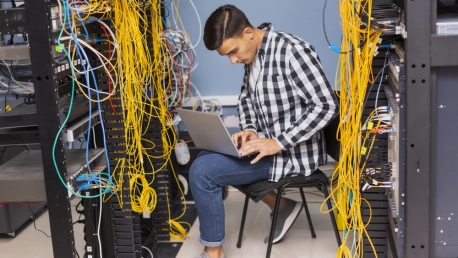Network security is an important concern for every IT manager and network administrator. Given its importance, it’s surprising that most enterprise security architectures still rely on manual intervention when things go wrong. Understanding Self-Defending Networks is crucial for your business, and could mean the difference between functioning normally and going bankrupt.
Conventional security solutions leave the network vulnerable to attacks
It is universally accepted that the weakest link in network security is the user, usually through harmful and incorrect interventions. Often, attackers use social engineering techniques to take advantage of this fact—defeating even the most secure networks by tricking users into revealing sensitive information. In addition to this type of user behavior, security can be compromised by remote, unmanaged devices connected to a network—such as IoT sensors, printers or programmable controllers. These devices can be used as “Trojan horses” to crack even the strongest security measures.
The main conventional method to protect against cybercriminals is to use a firewall to inspect traffic. This is a common working architecture that focuses on protection from incoming traffic. It still leaves the network vulnerable to attacks from within the network itself—from connected devices, and from external environments.
A more secure approach is to force traffic, including internal traffic, through the firewall. This solution requires a very powerful and expensive firewall. It also causes communication delays, which are often simply unavoidable. Another method, widely used in industrial Ethernet networks, is to divide the network into subnets, and place a firewall between the subnets and the core network. This approach blocks malware threats from spreading beyond the local subnet.
Regardless of the architecture, even the best firewall cannot provide protection against threats from user endpoints, because firewalls can only block visible traffic. A firewall cannot control the device causing the problem. Once it detects this type of attack, the only thing a firewall can do is to alert the administrator, who will then investigate and take manual action. This takes time and resources, and as the threat spreads, sensitive information will most likely be leaked. If a network device copies infected files or uploads sensitive material, that device should be isolated from the network immediately to prevent further damage.
The Internet of Things (IoT) created new businesses and revenue streams, but also new opportunities for sensitive information to be compromised. Therefore, new cybersecurity threats require smarter and better defense mechanisms.
Self-Defending Networks are instantly responding to threats
The Self-Defending Network is the next generation of network security. It identifies, prevents and adapts to threats from both internal and external sources. Ideally, a network should defend itself based on the detected threat and the device that caused the problem. Counteraction should be immediate, and the infected device should be isolated from the network to prevent further damage. In addition, it doesn’t matter how the device is connected to the network—whether wired or wireless—because the level of protection and the type of response must be the same.
Some solutions are designed to work with most common firewall products to centralize security policies on a single device, and save you the expense and inconvenience of changing your primary security device. Moreover, autonomous intelligence automatically decides the right response to any detected attack.
The major benefit of the Self-Defending Network is its immediate and accurate threat response without any manual intervention. Actions are configurable based on the event encountered by the firewall—so accidental visits to insecure web pages can be distinguished from malicious attempts to steal data. Suspicious devices can be completely isolated from the network or moved into quarantine to await remedial action.
Suspicious user devices can be automatically isolated, regardless of whether they are wired or wireless—thus ensuring there are no network vulnerabilities, and no need for endpoint applications. Threats coming from a server in the data center can be blocked just as easily as one coming from a mobile device. A Self-Defending Network also monitors and protects traffic on a company network without adding delays.
The demand for network security has increased tremendously. According to a Fortune Business Insights analysis, the global market exhibited a growth of 9.6% in 2020 as compared to the average year-on-year growth during 2017-2019. The market is projected to grow from $27.39 billion in 2021 to $60.38 billion in 2028 at a CAGR of 12.0% during the 2021-2028 period.
Conclusion
With cybercrime growing rapidly worldwide, network security is essential to the proper functioning of industries, businesses, social services, and social activities. Networks must become, and remain, more available and reliable—especially when it comes to responding to attacks. A Self-Defending Network, along with a Risk-Based Authentication approach, can help achieve this desired level of security.









